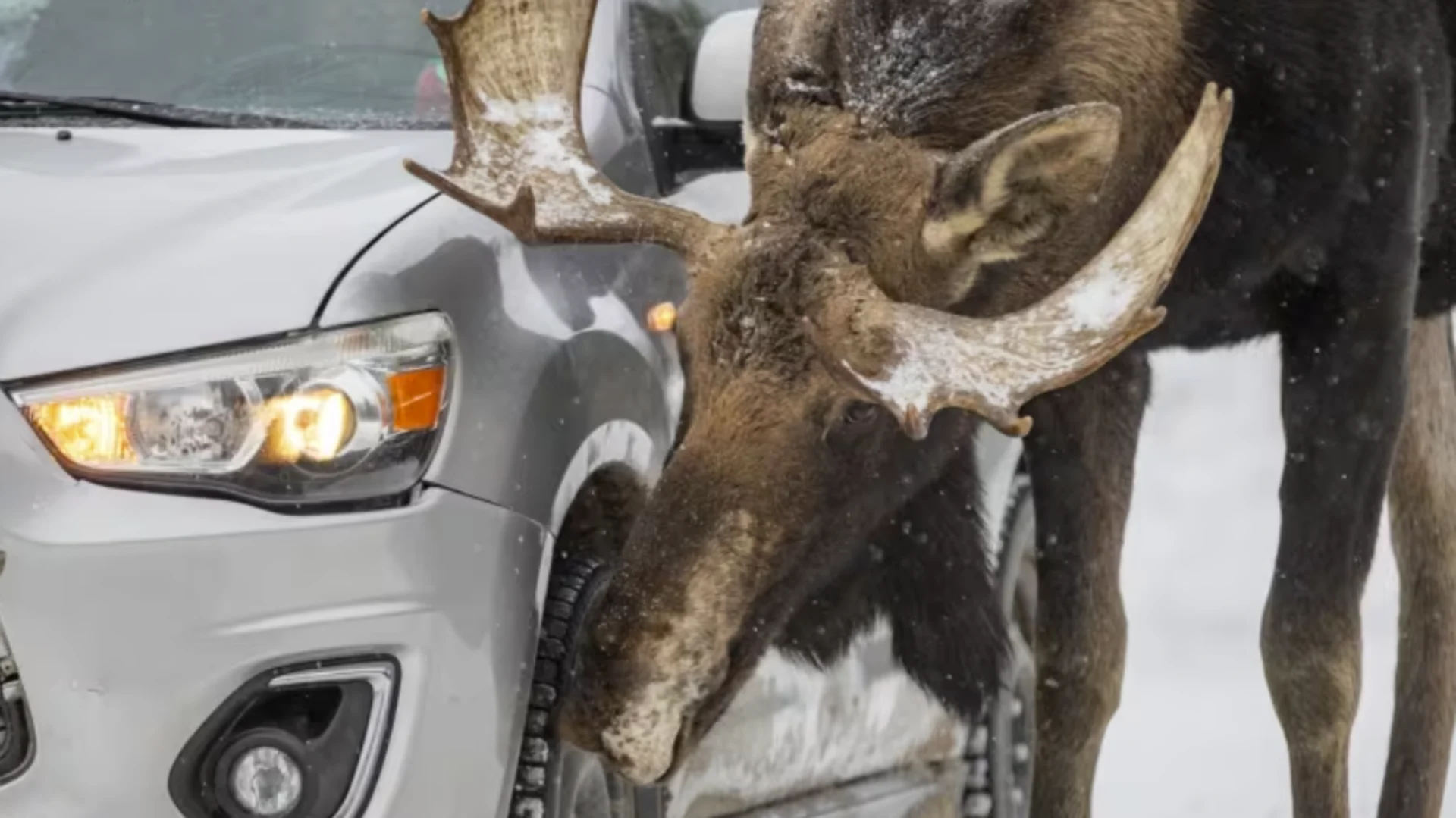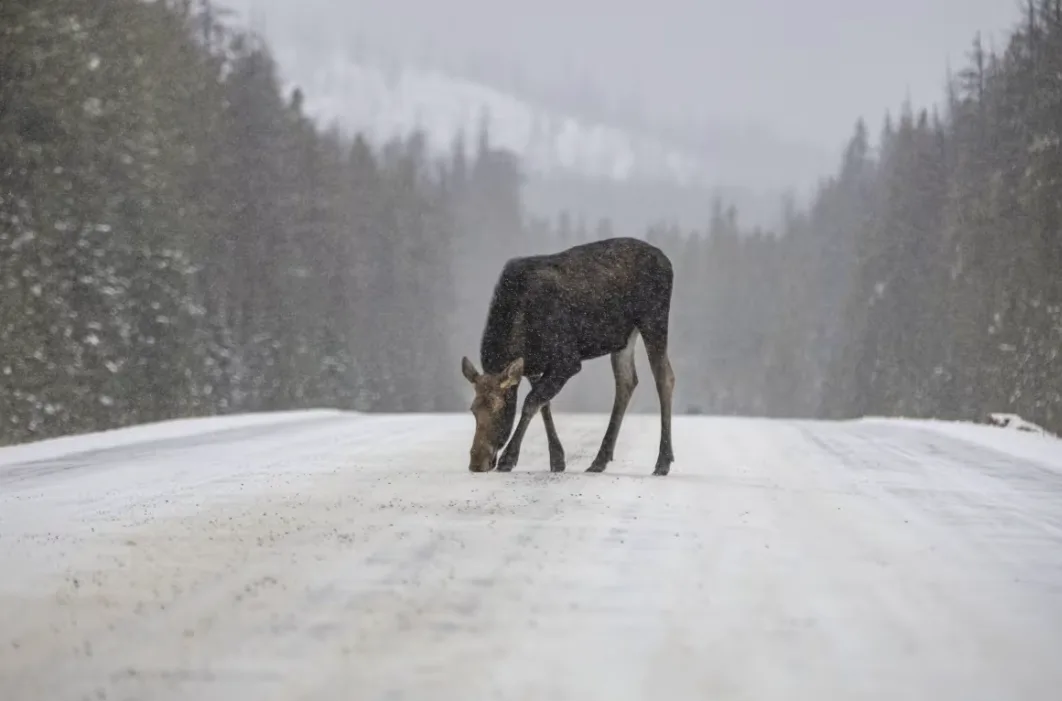
'Try not to let moose lick your car,' warns officials, as moose take to highways
Parks Canada is warning drivers not to stop while on highways to let moose lick their cars this winter.
The peculiar message comes as moose have been trekking onto highways to lick salt off of roads and passing vehicles, says Tracy McKay with Parks Canada.
"It does sound very funny … It's okay to laugh at it, as long as people drive responsibly and do what's best for the wildlife," she said.
McKay says Parks Canada puts out a warning every winter as moose venture down to highways to fuel their salt intake.
RELATED: Moose beware: Don't lick cars, you've been warned
"Unfortunately, this kind of puts [moose] at risk of being injured or killed if they get hit by a vehicle," she said.
"Parks Canada understands that seeing those wildlife is a real highlight for a lot of people, but we ask people not to stop … so that the moose can't get used to licking salt off of the cars."
Roy Rea, an assistant professor at the University of Northern British Columbia, has been studying moose for 25 years, particularly why they come close to transportation corridors.
"It just turns out that one of those reasons [moose] are there is because of the road salt that is applied in the winter to de-ice roads," he said.

Moose search for salt in the winter to fulfil their high salt intake, says researcher. (Parks Canada)
Rea says the large creatures search for salt in the winter because they need a lot of sodium to maintain their bodily functions.
"In the summer there's lots of greenery around and those plants have a lot more minerals in it … and in the winter they typically don't have access to that.
"They have to go where they can to find the salt and … one of the most convenient places for them is if they cross the road and give it a lick," he said, adding cars have become an enticing treat due to salt residue from winter driving.
Rea says while he's never personally experienced it, many of his friends in northern B.C. have seen it happen.
With December and January being the darkest and often coldest months, Rea is warning drivers to be extra cautious while driving on highways.
"You've got this big, dark brown, black moose standing on a black asphalt road with a black background … and you don't see it 'til it's too late," he said.
SEE ALSO: Grizzly bears roaming in B.C. cities reflect 'kind of a weird year' for wildlife
WATCH: Watch out for salt licking moose roaming Alberta
"It just so happens the peak moose-vehicle collisions that we have in B.C. are in December and January when it's darkest and when we're doing most of our driving in low-light conditions."
Parks Canada first started warning people after it received calls from drivers going through Alberta's Jasper National Park, who were seeing moose come up to lick their cars, says McKay.
He adds nearly four moose are killed every year by vehicles in that area.
McKay says despite the agency using sand for the park's roads, moose are still drawn to it for the trace amounts of salt found in the sand.
"There's been a few projects in various places that have tried salt alternatives, but they tend to be more expensive or they don't work as well or both," she said, adding the warning is a way to preserve Canada's moose population.
"If it's safe to keep going without running into the moose, then we would recommend people just try to slowly, carefully drive away. Just try not to let moose lick your car."
Thumbnail image courtesy of Parks Canada via CBC News.
This article, written by Arrthy Thayaparan, was originally published for CBC News. Contains files from Kate Partridge.









